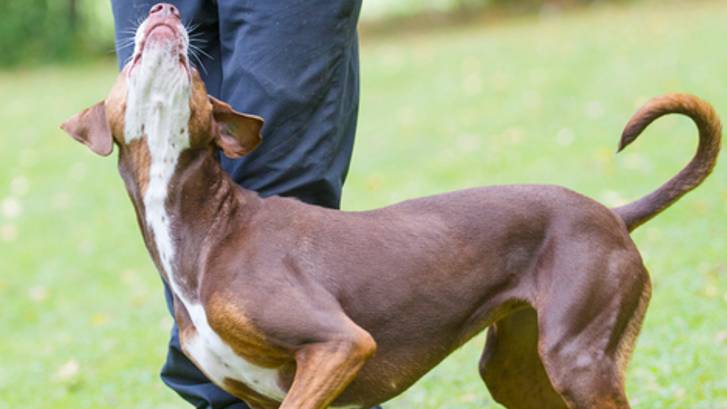Clicker training for dogs: When and how you should use mark and reward
This positive reinforcement method uses well-timed clicks to speed up your dog training

Whether you’re trying to teach them good behavior or discourage the bad, clicker training for dogs can be an effective way to teach your pooch obedience.
Training your dog can often be a long and difficult process: stopping begging at mealtimes, sitting on command, and tackling excessive barking can all be a uphill battle.
Developed back in the 1940s by Keller and Marian Breland, clicker training can help speed up the process by helping your dog associate good behavior with rewards in a much more effective way than simply offering high value dog treats and praise alone. If done correctly, clicker training can be a brilliant way to get a happy dog and happy owner in double quick time.
This article will cover the pros and cons of clicker training, as well as providing a step-by-step guide on how to train a dog with a clicker so whether you're completely new to dog training with treats or are not sure whether this type of activity is right for your pooch, you'll be a pro in no time.
What is clicker training?
Clicker training is a way of training your dog using a clicker and positive reinforcement to reward good behavior and discourage unwelcome behavior.
When you’re having a training session with your pup, use a clicker to highlight the exact moment it performs a desirable action and follow it up with a treat. The idea here is that the dog will then associate that clicking sound with an incoming treat and is therefore more likely to perform that action again.
Pros and cons of clicker training for dogs
There are pros and cons to clicker training. The main benefit is that training via this method can be much quicker than other methods as your dog can establish links between good actions and rewards faster.
Get the best advice, tips and top tech for your beloved Pets
The main con is that you and your dog could become over-reliant on the clicker to signal good behavior and it may get confused once you stop using it. Clicker training isn’t for everyone, but it is one of a number of established, successful training methods.

Do you need a clicker to train a dog?
The advantage this method has over simple reward-based training is that you can show your dog the precise action you are rewarding. Dogs often have to stand or run over to you when being given a treat, and they may come to think that is why they’re being given the treat.
The clicker points out the reason for the treat and therefore prompts the association with the right kind of behavior more quickly and more clearly for your dog. Read on for tips on how to effectively clicker train your pet.
How to train a dog with a clicker
1. Practise before training
To make the actual training easier, start using the clicker before a session. If you see your dog performing behavior that you’ll want to reward, click the clicker and praise them. This will establish the clicker in their mind as something positive.
Try not to let your dog see the clicker, keep it behind your back or at your side so it doesn’t become a focus. You could then, in the future, just use your fingers.
2. It’s all in the timing
For clicker training to work, you need to have your timing perfect. If teaching your dog to sit, lure the behavior, then click the clicker the second your dog’s bottom touches the floor. This will help establish the connection between the click and the action.
Follow it up immediately with a treat to help your dog understand that a click leads to a treat. Clicker training is meaningless unless it is followed by a treat. Mistiming your click or delaying the treat could lead to confusion for your dog

3. Keep sessions short
Limit sessions with the clicker to around 10-15 minutes. Studies have shown that dogs are only capable of concentrating and learning for between three and ten minutes, so much longer than this and you’ll be wasting your time.
This will also reduce fatigue in your dog, keeps things fun for both of you and means that you don’t end up over-feeding your pup. When reward/clicker training, be conscious of how much you feed them and adjust their meals accordingly, as a lot of training could lead to a lot of extra calories and a plump pooch!
4. Only use the clicker for training
One important part of clicker training is to not use it at any other time. As your dog will need to have a strong association with the sound of the click and good behavior, clicking when it’s doing something wrong or nothing in particular will firstly reinforce undesired behavior and confuse it if it expects a treat afterwards.

5. Make it a game
Part of training is about fun, so clicker training turns the process into a game with your dog. This will encourage your dog to enjoy the process and will speed up the training. Eventually, the clicker itself should become the reward and you won’t need to feed your pup. And then you won’t need the clicker at all and your dog will be fully trained.
It’s not for every dog
This is a very response and reward-based training process. If your dog doesn’t respond particularly well to food or toy stimuli, you might need to choose a different kind of training programme. It’s all about your particular pet and how they react to training. Clicker training could work well for some intelligent dog breeds and less well for others, so just judge your dog.

